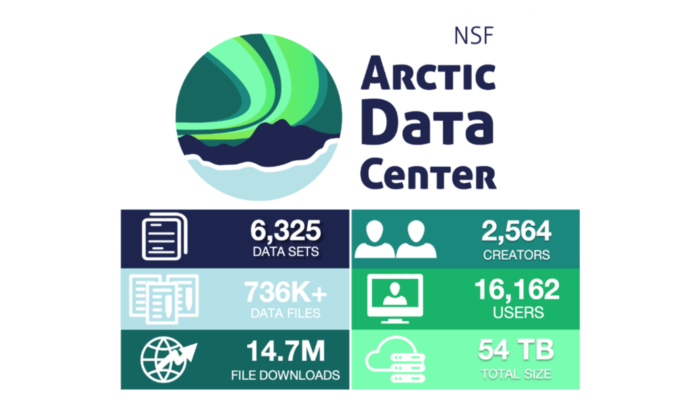Geomorphological maps are a fundamental tool to represent landforms and understand how different morphological elements and agents shaped a natural landscape. They are also important as background information for many fields of research including ecology, forestry and of course, glaciology. In this week’s blog, Levan Tielidze tells us about the importance of mapping glacial geomorphology, presenti ...[Read More]
If you didn't find what you was looking for try searching again.
Cryospheric Sciences
Do meditation and a better science correlate? – Mindfulness in Academia
We often start searching for the term “mental health” online only when mental issues are already arising. It seems to be a trendy word on everyone’s social media. Of course, you don’t have to suffer already in order to learn about, and benefit from, mindfulness – or the ability to notice the present moment and what is going on in your life. In this post, I am sharing how I became a more mindful sc ...[Read More]
Cryospheric Sciences
Climate Change and Cryosphere – What can we learn from the smallest, most vulnerable glaciers in the Ötztal Alps?
The Alps were the first mountains to be studied from a glaciological point of view in the 19th century and they host some of the most studied glaciers of Earth. Some of them are found in the Central Alps and in particular, the Ötztal Alps. Just to cite the most known and largest glaciers in this Alpine sector, we can mention Hintereisferner or Vernagtferner. But in the Ötztal Alps you can also fin ...[Read More]
Cryospheric Sciences
Do you know about OGGM-Edu? An open-source educational platform about glaciers and glacier modelling
Are you teaching about glaciers and looking for fun educational activities for your students? Are you planning a workshop about glacier modelling and want to make it interactive, with a low entry level? Are you interested in learning about glaciers and glacier modelling, and looking for a simple way to get started? On top of that, do you want to do all of the above without installing anything on y ...[Read More]
Cryospheric Sciences
Did you know that glacier mass loss affects water resources?
The picture above shows a typical Kyrgyz summer yurt camp, located in the valley of Altyn-Arashan, Kyrgyzstan. The stream you see flowing through comes from the glacier-fed lake of Ala-Kul, the gorgeous turquoise water featured below. The families who live there during summer have done so for generations, and travel up with their herds of horses and cows. The stream provides the water they need fo ...[Read More]
Cryospheric Sciences
Rain or snow? Answering the question with citizen scientists
As a New Englander interested in weather, I was used to a fairly intuitive air temperature split between rain and snow. Once air temperature got slightly above freezing, I’d commonly see rainfall with snowfall more frequent below freezing. Then something happened when I moved to the Intermountain West of the United States. Instead of seeing rain when it was slightly above freezing, I’d see snow at ...[Read More]
Cryospheric Sciences
Did you know there’s a place to Find, Discover, & Download Arctic Data? Meet The Arctic Data Center!
Getting data from the Arctic is often difficult and expensive – instead, stand on the shoulders of giants and investigate over 6000 datasets preserved for future download and reuse in the Arctic Data Center! Read on for more information about the Arctic Data Center and the data contained therein. The Arctic Data Center is the primary data repository for the Arctic section of the US National ...[Read More]
Cryospheric Sciences
Did you know … that liquid water can be held within a glacier?
Hidden below the surface of some glaciers, liquid water can be found within what is called the firn layer – the upper layer of a glacier where snow compacts into glacier ice. Liquid water may persist there for up to many years, forming what scientists call “firn aquifers.” While observations of seasonal firn aquifers have existed since the mid to late 1900s in several mountain glaciers, recent stu ...[Read More]
Cryospheric Sciences
Cryo-massy Films
There are countless Christmas films, and almost all of them feature some form of snow, ice or cold weather. There are the classics such as Home Alone, Elf and Miracle on 34th Street, and there are the newer, shall we say ‘Netflix’ style, which feature Princes, Knights and Vanessa Hudgens. There’s just no way to watch them all over the festive period, so let us recommend you our top 5 Christmas fil ...[Read More]
Cryospheric Sciences
Hysteresis For Dummies – Why history matters
Perhaps you have stumbled upon the word ‘hysteresis’ before, for example in connection with the stability behavior of our Earth’s large ice sheets and their long-term effect on global sea-level rise, or the long-term stability of the Atlantic Meridional Overturning Circulation, or even in another context outside earth/climate science. Or you might have come across this term during your studies, bu ...[Read More]










